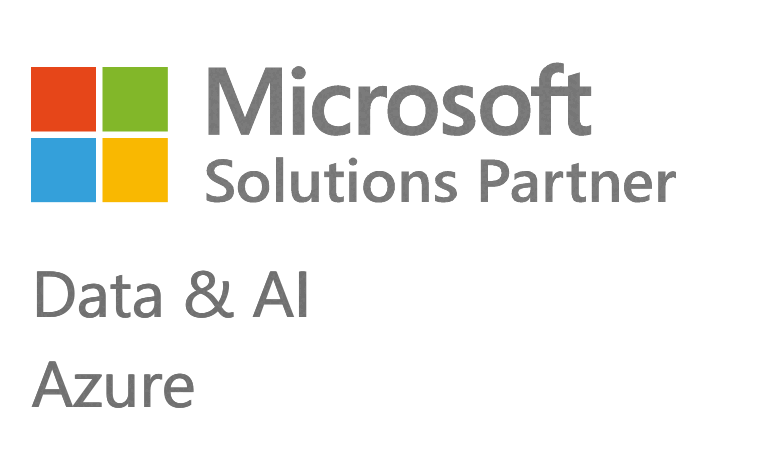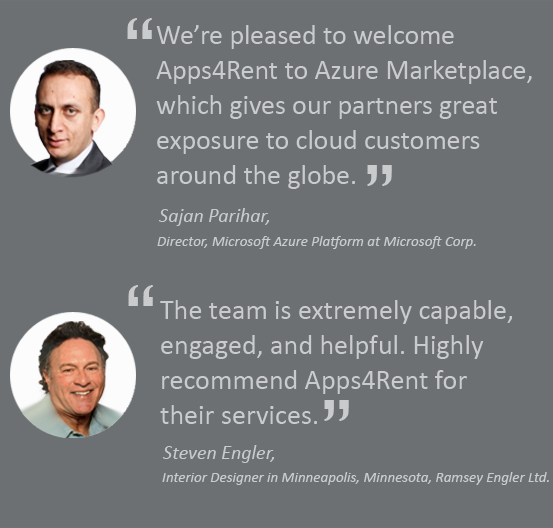MS Exchange on Microsoft Azure
If you depend on MS Exchange for your email management solution, you might want to investigate how your Exchange implementation can be improved by the Microsoft Cloud platform – Microsoft Azure. The Azure platform is scalable, secure, and reliable: the three characteristics of any enterprise email management solution. You can also integrate third-party software seamlessly while using Azure.
At Apps4Rent, we have 14 years of experience with on-premise and cloud implementations of Microsoft Exchange Server. As a Tier 1 Cloud Solution Provider for Azure and Office 365, we can migrate your existing Exchange implementations to Azure, or develop/manage hybrid implementations. Here are a few examples:
Five Ways to Take Advantage of Azure in MS Exchange Implementations
If you want to experience Azure with MS Exchange, you can start with a test implementation of Exchange Server on Azure. If all the suitability criteria are met, deployment of Exchange 2013 or higher is supported. We have developed several template configurations that can get you started right away. For test implementations, one can get away with regular storage on Azure. However, production servers require more expensive Azure premium storage for Exchange databases and database transaction logs. We can certainly help you in creating a production environment for Exchange, if you are ready and have a business case for it.
Azure Backup can be used for backing up Azure virtual machines (VMs) running production workloads. Windows and Linux VMs are supported for application-consistent backups. The geo-redundant recovery vaults store the recovery points created by the Azure Backup. The entire VM can be restored by restoring from a recovery point, and even specific files can be restored.
Even when the whole region faces an outage due to major natural disaster or widespread service interruption, Azure Site Recovery protects your VMs from a major disaster situation. Azure Site Recovery can be configured for your VMs to recover your specific application, everything in just matter of minutes with a single click. You can choose an Azure region to replicate, rather than restricted to paired regions.
The business and technology owners must make sure what functionality is required during a disaster. The functionalities can come in different scenarios: completely available, partially available, completely unavailable. In partial available scenarios, the functionality can be reduced, or the processing can be delayed.
Microsoft Azure Backup can back up the DPM data to Azure. Data backed up to DPM can be stored on tape, on disk, or backed up to Azure with Microsoft Azure Backup. The advantage of using Azure Backup for on-premises DPM deployment is that it can be used as a substitute for tape for long-term storage. For Azure DPM deployments, the storage on Azure disk can be offloaded which allows you to scale up by storing data in Recovery Services vault.
Azure’s superior infrastructure in providing DAG (Database Availability Group) witness server at multiple physical sites improves resiliency and availability of the Exchange deployment.
Azure VMs support high performance and low latency, which makes it suitable for Azure Premium Storage. As a result, they are highly robust and provide automatic failover data centers. Organizations with only two physical locations now can also take advantage of automatic datacenter failover by using a Microsoft Azure file server virtual machine to act as the DAG’s witness server.
By enabling the use of Azure as a third physical site, this provides many of our customers with a cost-effective method for improving the overall availability and resiliency of their Exchange deployment. Microsoft has recently introduced multi-site VPN support, which enabled organizations to connect multiple datacenters to the same Azure virtual network. This change also made it possible for organizations with two datacenters to leverage Microsoft Azure as a third location to place their DAG witness servers.
Azure AD Connect is a tool and guided experience for connecting on premises identity infrastructure to Microsoft Azure AD. This Synchronizes users’ identities between local and cloud directories. Azure Active Directory (Azure AD) Pass-through Authentication allows your users to sign in to both on-premises and cloud-based applications using the same passwords. On-premises passwords are never stored in the cloud in any form.
Azure AD Connect will integrate on-premises directories with Azure Active Directory. This allows a common identity for your users for Office 365, Azure, and SaaS applications integrated with Azure AD.
Why Moving MS Exchange to Azure Is an Advantage?
Moving your MS Exchange to Azure has benefits from technological viewpoints. If you are Dedicated Server customer, you can store your data backup on Azure long as you want. The backups are stored at different locations, avoiding the chances of data loss even in worst disaster scenarios in a datacenter. Considering the above-mentioned parameters, moving your MS Exchange on Azure or a Hybrid on-premises/Azure environment is one of the better choices that you will make. If you are interested in exploring any of the discussed cases above, or have your own specific requirements, contact our Exchange experts today!














